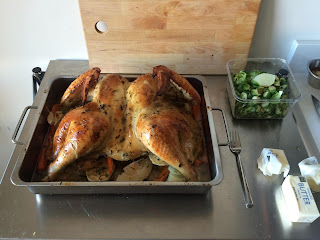You're Going To Eat What?? Violets...Of Course!
(Hey pssst...a quick note, this post contains affiliate links where I may earn a small commission at no extra cost to you. This helps to keep my blog and my home running.)
What are violets?
Violets are a purple to blue flower that blooms in early spring to early summer. The hotter the temperature the faster these little delights will disappear. They are a ground covering plant with heart-shaped leaves and some consider them weeds. I love them for their mild flavor and medicinal qualities for free throughout my yard each spring. Plus they're so pretty to look at who could object to these little tenants in their lawn?
Where to find violets:
Violets typically grow in shady areas and spread to sunnier areas over time. So look under large shade trees, larger leafy bushes, and near porches that throw a great amount of shade across the yard. These little flowers can be easy to miss, but if you take the time to look their little purple or blue faces can be easily seen. They are often found best before your yard has been cut for the first time in spring.
Identifying violets:
This flower may be found near creek banks or streams, thickets, or within the forest or edges of the forest. They have heart-shaped leaves and grow low on the ground. They have purple, blue, white, or sometimes yellow faces as well. Flowers appear as a single bloom on each hairless stalk. As mentioned above they bloom from early spring to early summer in most locations of North America.
Violet lookalikes, beware
Avoiding poisonous look-alikes can be easy enough with violets. Only harvest violets when there are flowers present. The leaves may mimic the leaves of other plants which can be poisonous. It's also important to mention that though the violet is edible in blooms or leaves, the root should be avoided. The root of many violet species can cause stomach upset or vomiting. So stick to the aerial parts and stay safe when gathering.
How to gather violets
Gathering violets is best done in the late morning or early afternoon after the dew has dried. Gently pinch the violet blooms from the stems and take care not to bruise the blossoms. Take care not to pull up violets by the roots. If you'd like you may gather the leaves as well in the same way. Be advised though that violet leaves can sometimes be high in saponins depending on the species which may cause itching or discomfort of the mouth or throat.
Cleaning wild violets
Gently brush the blooms free of debris before drying or using as a garnish. You may also do the same before adding to cakes or candying these tender blossoms as well. The leaves may be washed gently just like any other greens. Be sure to drain the leaves well and use them in your favorite dishes throughout the growing season.
Storing violets
- Drying and storing them in a jar
- Candy them and store them in a tight, dark glass jar in your pantry
- Freeze them into ice cubes for beautiful cocktails and drinks
Violets for medicinal use
Violets have been used throughout time for a variety of complaints. Because violets are safe to consume in large amounts they can be used from youngsters to the elderly with very few problems it is believed. As with anything else though, please discuss any and all medications with your healthcare provider before taking anything. Violets can be used for eczema, lymphatic support, purifying the blood, cooling conditions, It has sometimes been recommended for bronchitis, dry hacking coughs, and whooping cough as well. It can be used as a tea, syrup, salve or compress. Oh and violets can be crushed and placed on bruises with bandaging as well to take away soreness and discoloration.
Violet precautions
As with any wild plant be careful when foraging and observe all posted property laws for your area. Make sure you are gathering violets. If in doubt consult a good field guide or get hands-on help from an experienced forager in your area. Also, it may be helpful to slowly introduce violets to your diet if you have any allergies to avoid an allergic reaction or any complications.
Violet medication interactions
The current interactions of violets and other medicines are unknown. Please see a healthcare provider before taking violets for medicinal purposes.
Violets for cooking and eating
Now for the tasty part! I love the mild, sweet flavor of violets. This flavor was a popular addition to many tables from the Victorian times up until World War I in North America. Violets can be candied and eaten as a sweet snack or used as a garnish. They may also be added to cakes, muffins, and pancakes for a pretty creation and delicate flavor you can count on. If you are looking to add something your salad these blooms peeking from beneath tender spring leaves are sure to make your day. Leaves may be added to soups or stews as a natural thickener or they may be sauteed in the early growing season just as you would with spinach.








Comments
Post a Comment